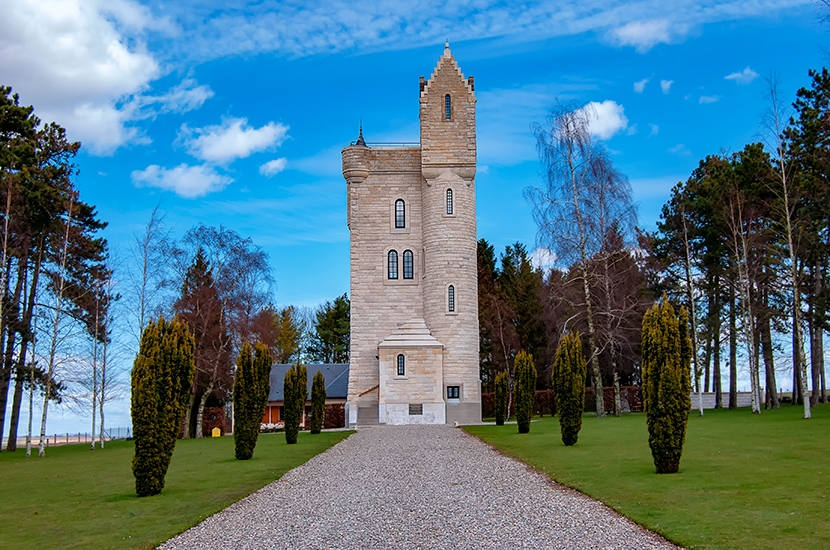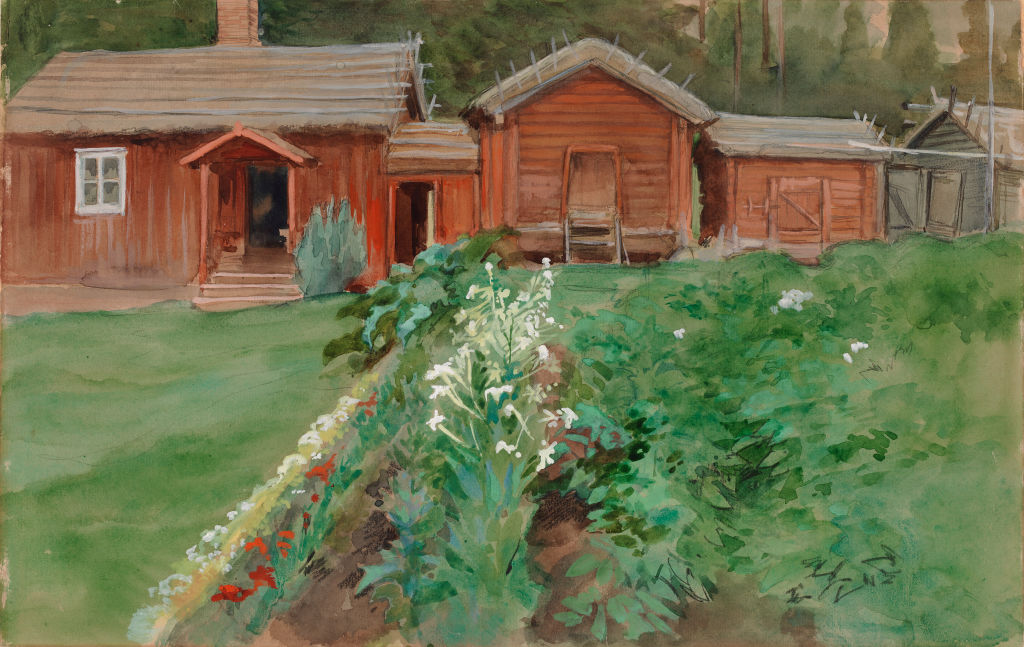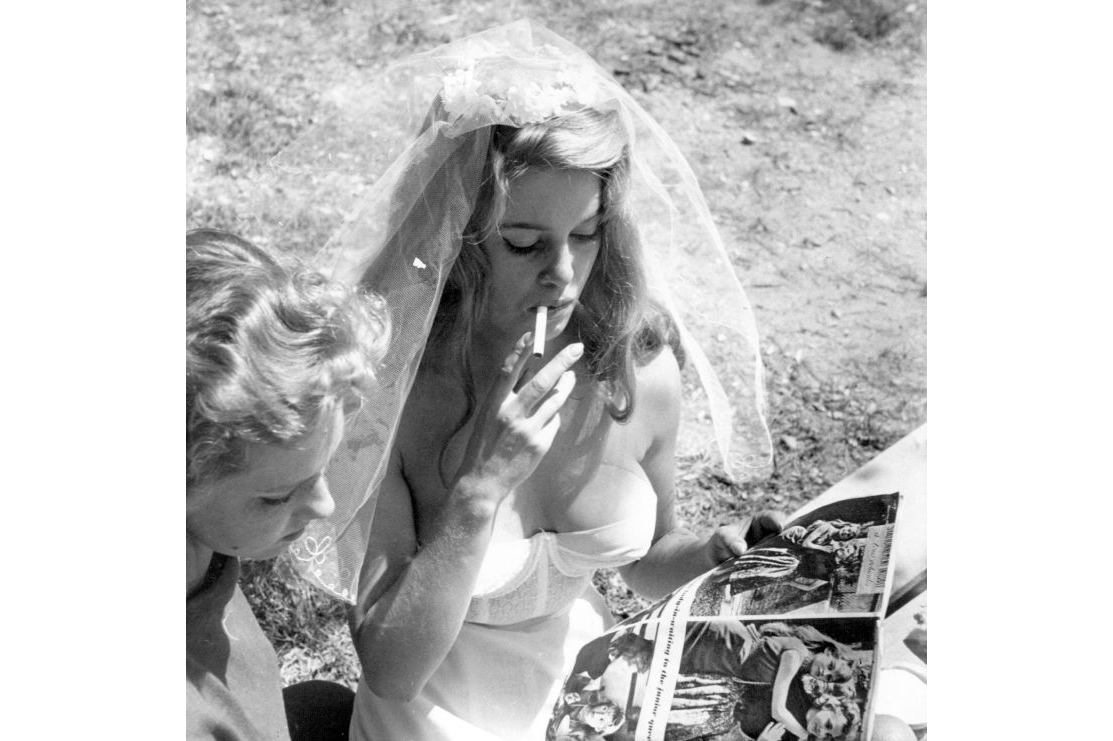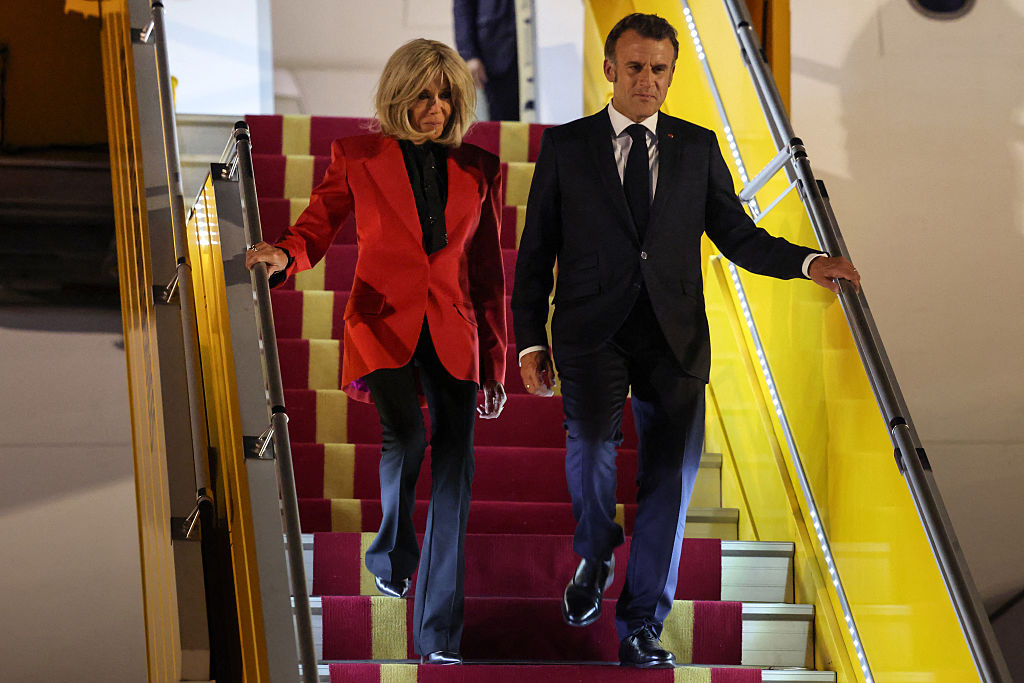Where the 36th (Ulster) Division attacked at 7:30 a.m. on the first morning of the Battle of the Somme in 1916, I ate a cheese and onion sandwich and a KitKat. What happened was this. Charging forward from saps dug out into no man’s land from the frontline trenches in Thiepval Wood, the Ulsters overran the enemy’s first, second, third and fourth lines and the formidable Schwaben Redoubt. But the Germans quickly put down a barrage of machine-gun fire across no man’s land preventing reinforcements getting through. Hand-to-hand scrapping in the German trenches continued all day until a weary remnant was pushed back to the original German front line. The sunken road in no man’s land was heaped up with dead. The Ulster Division suffered 5,000 casualties, roughly half its strength, and won two Victoria Crosses. A failure, but a glorious one. The sandwich was supermarket bread and thinly sliced processed cheese.
After the war a fairy-tale commemorative tower was erected at the northernmost limit of their advance. The Ulster Tower is a replica of a folly called Helen’s Tower, which stands near the old divisional training ground at Clandeboye, County Down. The tower and surrounding garden of tonsured cypresses is an enchanting oasis in an enormous field of ripening wheat.
Beside the tower is a British-run café with good toilets selling tea, coffee, cold drinks and snacks. Our battlefield guide brought the foreign correspondent and me here for our lunch break. We sat at a picnic table next to a stack of rusty artillery shells. The foreign correspondent had tuna and onion. Our guide, a former Royal Marine, ate nothing because he was watching his weight.
During the morning he’d shown us the site of the Pals battalions’ catastrophic advance from the copses of Matthew, Mark, Luke and John up the hill towards Serre. (On the northern sector of the Somme battlefield the British advances of July 1 are always uphill and catastrophic.) He drove us there by a roundabout route to avoid a deranged pitchfork-wielding local farmer. Lolloping lackadaisically up one of this antipathetic farmer’s tracks was the biggest hare I’d ever seen.
His tilled and planted fields were littered with shell fragments and lead shrapnel balls the size of small marbles. Beside the grassy path leading through pretty pink flowering potato plants to the Queen’s Cemetery, shards of rusty metal were scattered over the brown earth. On the cemetery steps, two rusting artillery shells stood upright like milk bottles put out for the morning. Inside the cemetery was a picture of yellow roses. The cemetery gardeners diplomatically returned to their van for a coffee break and all you could hear after they’d gone were blackbirds and skylarks. After Serre we moved south to the scene of yet another July 1 uphill disaster at Beaumont-Hamel. Here we climbed Hawthorn ridge to peer into the famous mine crater.
During the morning the foreign correspondent had carefully taken everything in without a word. The British couple who ran the café lived in the fairy-tale tower. His question to the woman — ‘What’s it like living in this amazing tower?’ — was the first time he’d spoken. She said that the interior was largely occupied by a central staircase and museum, so the living area was not enviably large. They’d moved in just before the pandemic hit and had hardly seen another soul for more than a year. The Ulster Tower was often struck by lightning. And the less than fairy-tale answer to his question was that she had never seen so much of her husband in 15 years of marriage.
Then the husband appeared. He’d been out collecting battlefield relics. After rain is best, he said. Even without the combat trousers you could have told at a glance that he was a former soldier. He laid on the table in front of us three bullets, a bullet clip, three buttons and a fragment of pottery. Our guide picked up each item and said without hesitation: ‘British, French, German, British, German, German, German, Roman.’ Then the husband put in front of us a Tupperware box heaped with bullets, cartridges and clips and told us to help ourselves.
As a further treat he led us across the old sunken road to Thiepval Wood, now leased by the Somme association, to show us the frontline dugouts and trenches. The sunken road is now level with the fields and tarmac-sealed. A mile away, across a valley, Lutyen’s Memorial to the Missing of the Somme, bristling with scaffolding, stood head and shoulders above the skyline. He unpadlocked a gate and led us into the sombre wood. The undergrowth rose and fell like the waves of the sea. Near the edge was an excavated frontline trench from which the Ulstermen had launched themselves at the Germans.
‘Wearing their orange sashes,’ said know-all Clarke.
‘I believe that story to be apocryphal,’ said our excellent guide — not for the first time that day.
This article was originally published in The Spectator’s UK magazine. Subscribe to the World edition here.

























